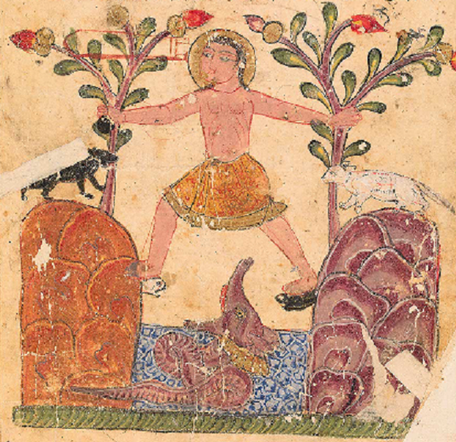From the Frame Tale to Framing Intertextuality
An Introduction
DOI:
https://doi.org/10.5617/jais.10119Abstract
The application of the term framing to Arabic texts is commonly confined to the frame tale type of which the Arabic tradition produced one of the most popular works, The Thousand and One Nights. This issue transcends the study of the Nights and the associated story-within-a-story trope, moving toward a reconstitution of the study of the frame tale as part of literary framings more broadly conceived, which include multiple notions and applicabilities. In so doing, “Framing Narratives” aims to fill in a lacuna both in the study of frame tales in the Arabic and other Middle Eastern traditions such as Kalīla and Dimna, Barlaam and Josaphat and the Seven Sages in their different versions and the broadening of the framing category itself.
This introduction presents a comprehensive and cumulative definition of framing narratives including notions of mise en abyme, mise en reflet/mise en série, paratext, and parergon, among others. The overall issue will contain definitory and structural-functionalist attempts, with additional foci on the translingual variation of frame narratives, and the intertextual variation of frames, connecting the realms of adab and poetry, philosophical and anthological genres, and scripture.
Key words: Framing, frame narrative, Arabic literature, Kalīla wa-Dimna, The Thousand and One Nights, allegory of the man in the well, Gérard Genette, Werner Wolf, contextualist narratology
Downloads
Published
How to Cite
Issue
Section
License
For content published in editions of JAIS before 2002, copyright belongs to the author. Content published between 2002 and 2017 is copyrighted by Edinburgh University Press (reproduced on FRITT with permission). Text and other material published in these journal volumes can only be shared and republished with written permission from the rights holders.
Starting from 2017, the content published in JAIS is - unless otherwise is stated - licensed through Creative Commons License Attribution 4.0: https://creativecommons.org/licenses/by/4.0/. Through this licence content can be copied and distributed but also remixed, transformed and built upon for any purpose under the following conditions:
Attribution — You must give appropriate credit to the creators of materials published in JAIS, provide a link to the license, and indicate if changes were made. You may do so in any reasonable manner, but not in any way that suggests the licensor endorses you or your use.
No additional restrictions — You may not apply legal terms or technological measures that legally restrict others from doing anything the license permits.
Notice: No warranties are given. The license may not give you all of the permissions necessary for your intended use. For example, other rights such as publicity, privacy, or moral rights may limit how you use the material.
Authors who publish in JAIS accept the following conditions:
Author(s) retains copyright to the article and give JAIS right to first publication while the article is licensed under the Creative Commons CC BY 4.0. This license allows sharing the article for non-commercial purposes, as long as the author and first publishing place JAIS are credited. The license does not allow others to publish adapted versions of the article without the author's permission.
The author is free to publish and distribute the work/article after publication in JAIS, as long as the journal is referred to as the first place of publication. Submissions that are under consideration for publication or accepted for publication in JAIS cannot simultaneously be under consideration for publication in other journals, anthologies, monographs or the like. By submitting contributions, the author accepts that the contribution is published in both digital and printed editions of JAIS.



